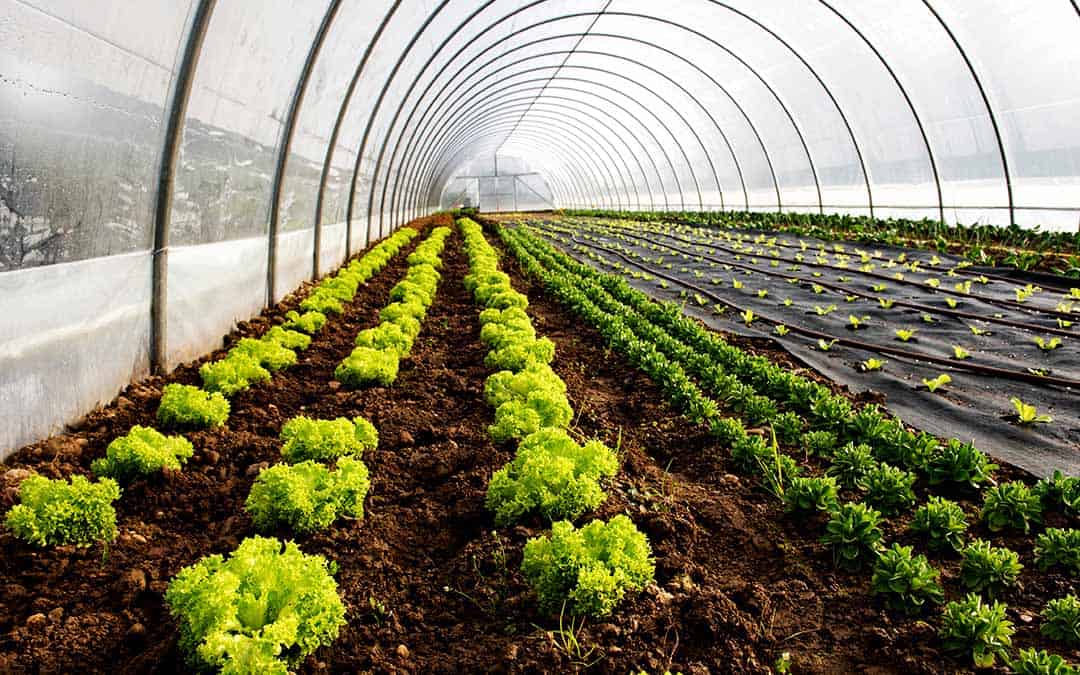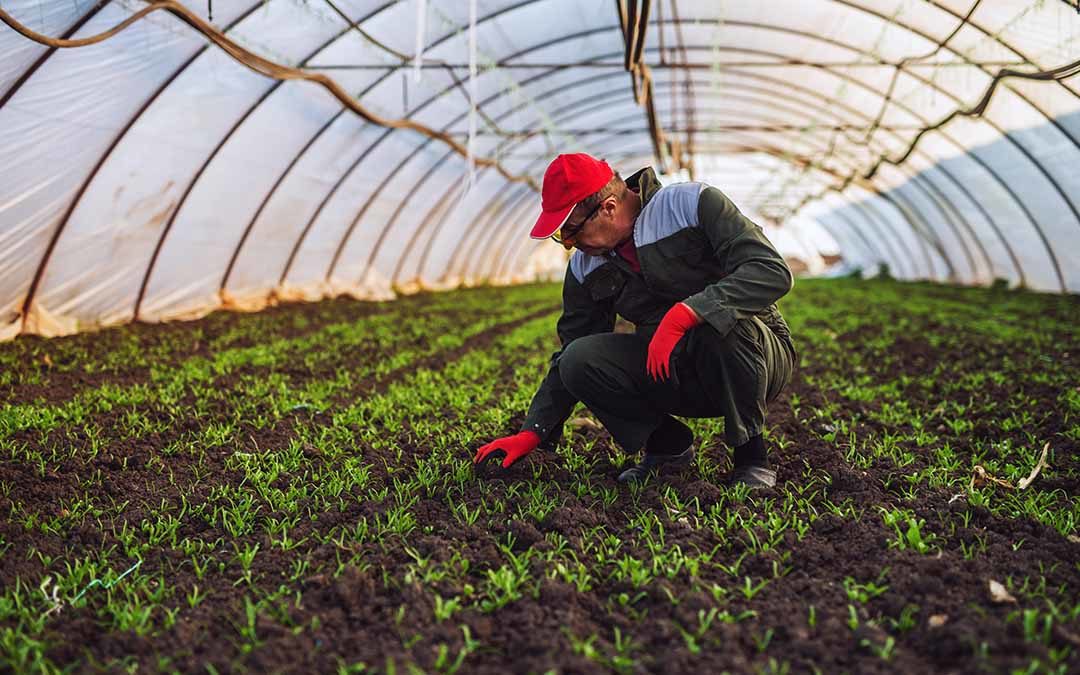Most of us remember enough from high school biology class to know that plants take in CO2 and create oxygen. And, if you’re even a casual gardener, you’ve probably spent some time making sure that your plants get enough light, water and nutrients.
But did you ever think about boosting plant growth with some extra CO2?
Recently, some greenhouse operators have found that adding some extra CO2 can boost plants’ yields by up to 30% with crops like peppers, cucumbers and grape tomatoes.
Although it can be higher or lower (depending on where you live), the amount of carbon dioxide in the air is on average around 350 parts per million. Under ordinary circumstances, this amount is enough to sustain plant growth. However, if one places many plants together in a closed environment like a greenhouse — with all of them using carbon dioxide in the process of photosynthesis — things can become a bit crowded, and carbon dioxide levels will soon start dropping.
In this case, enriching the air with additional CO2 is a great solution that makes it possible to boost the photosynthesis potential of all the plants in the greenhouse, particularly on a sunny day when they need more carbon dioxide. Not only does the extra CO2 benefit the various processes involved with photosynthesis, but it also helps to boost the yields of whatever crops you are growing in your greenhouse.
One method to boost CO2 levels in a greenhouse is the combustion of natural gas. Another way is to use liquid CO2. Something you have to be very careful about when you introduce additional CO2 in a greenhouse, however, is to ensure that the concentration of CO2 near the source doesn’t become very high while in other areas it is much lower. This could result in unequal plant growth and crop production.
In this regard, we can learn a lot from the Dutch. In their greenhouses, they place the carbon dioxide distribution lines below the growing gutter, close to the crops. The CO2 naturally diffuses to the top of the greenhouse, making sure that the plants gain maximum benefit from the higher levels.
Case Study 1: El Salvador, Central America

After the completion of a successful trial, another C02 Delivery Solutions unit will soon be installed at other greenhouses of a company called Hidroexpo in the Central American country of El Salvador. The additional units will be supplied by CO2 GRO, a large CO2 distributor.
During the trial period, Hidroexpo recorded an increase of between 20% and 30% in pepper production. The company’s general manager, Rodrigo Martinez, said they were extremely satisfied with the improvement in yields that were recorded over the last two growing seasons. He added that the decision to install the technology in a second greenhouse will most likely be followed by expanding to more greenhouses in the future.
Martinez went on to say that they believed that CO2 Delivery Solutions will be able to benefit the profitability of their business and give them a competitive advantage in the pepper production industry in their part of the world.
CO2 Delivery Solutions’ VP of Sales and Strategy, Aaron Archibald, said this was the first repeat order they received from a large international greenhouse vegetable producer. They were looking forward to assisting Hidroexpo with strengthening its market position and increasing its profitability. He added that the yield improvements Hidroexpo was able to generate over the two-year pilot period served to validate this technology’s benefits to greenhouses across the globe.
Case Study 2: Alberta-Based Vegetable Grower Uses CO2 to Boost Cucumber Growth

The Cucumber Man, a vegetable grower based in Alberta, started experimenting earlier with enriching the CO2 levels in its greenhouses by buying liquid CO2. It hoped to boost yields and reduce the spread of diseases like powdery mildew.
The company, however, failed to realize the benefits that it expected — particularly during spring, summer and fall — when the higher temperatures caused the biggest part of the CO2 gases to escape through heat venting.
CO2 Delivery Solutions then approached The Cucumber Man and suggested a different way to use CO2, one that would allow it to provide all of its plants with additional CO2 regardless of whether it’s summer or winter, spring or fall.
CO2 Delivery Solutions’ VP of Sales and Strategic Alliances, Aaron Archibald, said they were very excited to have started with their first greenhouse trial in this part of the United States. He added that this was important to them because they would soon be running two trials simultaneously, starting with cucumbers and soon afterward also with grape tomatoes.
Archibald concluded by saying: “Alberta is home to a robust vegetable greenhouse industry. We expect that success with The Cucumber Man will lead to additional opportunities in Alberta.”
The company first announced the trial in April 2021, but the arrival of the COVID pandemic caused serious delays.
Summary
During the process of photosynthesis, plants use water, sunlight and carbon dioxide (CO2) to produce oxygen and energy-rich compounds. Depending on various local factors, the concentration of CO2 in the atmosphere is normally around 350 parts per million. In a greenhouse, however, where large numbers of plants often have to compete for a limited amount of CO2, this can drop substantially. Once that happens, plant growth will be impeded, and harvests will be negatively affected. This can be prevented by artificially boosting CO2 levels in your greenhouse.
The question inevitably arises whether this can be done in a cost-effective manner. After all, if yields are not sufficiently increased, the additional cash layout might simply not be justifiable. Fortunately, there is good news in this regard. Several pilot studies in the United States and elsewhere have shown that by increasing the CO2 levels in a greenhouse from the default 350 parts per million to 500 or even 1,000 parts per million, yields can in many cases be increased by between 20% and 30%. The payback period for this type of investment can, therefore, be surprisingly short; and in the long run, the returns should far exceed the initial outlay.
Contact Calox Inc today to learn how we can supply C02 to increase your greenhouse yields.
Sources:
https://www.britannica.com/science/carbon-dioxide
https://www.iea.org/reports/putting-co2-to-use
https://atmosphere.copernicus.eu/carbon-dioxide-levels-are-rising-it-really-simple
https://www.dutchgreenhouses.com/en/technology/co2-enrichment/.
https://www.gasworld.com/co2-gro-secures-second-contract-with-hidroexpo/2023421.article
https://www.gasworld.com/co2-gro-delivery-solutions-enhances-fruit-and-veg-growth-in-alberta/2023091.article
https://www.britannica.com/science/photosynthesis
